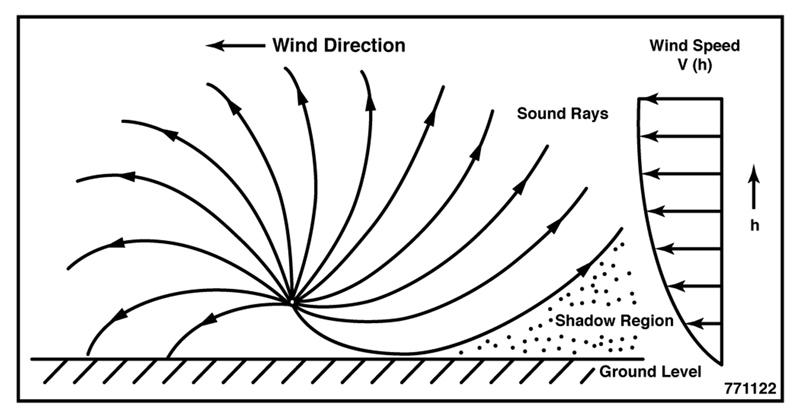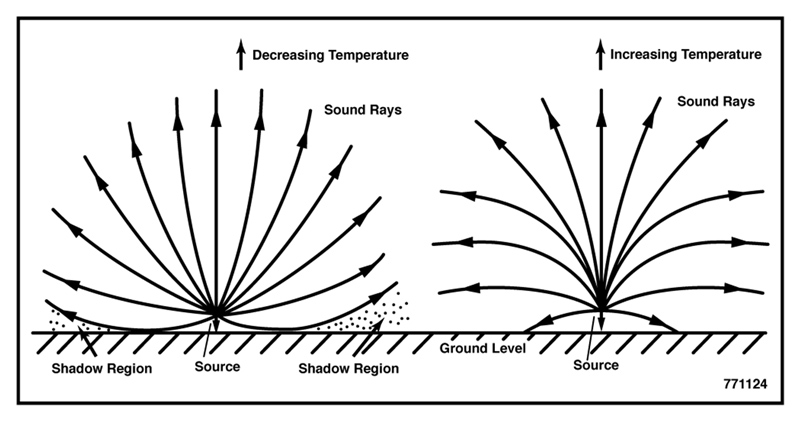Sound Reasons: The Answers
Winter
2015
Physics Puzzler
Sound Reasons: The Answers
Shouting at the Wind
By:Donald Simanek, Emeritus Professor of Physics, Lock Haven University of Pennsylvania
ANSWERS
01
Wrong answers often say something like this: "The sound downwind travels faster than upwind, so it travels farther downwind." This confuses speed and intensity. It doesn't matter how quickly a sound reaches the listener, but how intense it is when it is heard.
But air speed does play a role. Wind speed is slower near the ground, due to viscous drag. Therefore the downwind wave fronts are refracted, and sound that would normally travel upward at an angle is refracted back downward toward the earth, increasing the sound intensity heard there. Sound traveling upwind is refracted upward, away from the ground.

02
The temperature of air near the ground is mostly affected by the ground temperature, not by direct heating from the sun. The ground heats (and cools) the air near it. Normally the ground is warmer than the air above, so air temperature decreases with height in the troposphere (up to about 8 miles). Sound travels faster in warmer air, so the sound waves are refracted upward, away from the ground.
Various atmospheric conditions can cause a temperature inversion, with air temperature increasing with height. This causes some of the sound energy from a source near the ground to be refracted back toward the ground. Sounds are then heard at greater distances across a landscape. This is most likely in the dawn hours, more so in the winter (when the ground is cold) than in the summer.
Other conditions can affect sound propagation near the earth. Over short distances smooth water surfaces and snow- or ice-covered surfaces can reflect sound back upward. Rough surfaces and vegetation would absorb that sound. But for the large distances implied in this puzzle, the sound energy reaching the nearby ground wouldn't have reached the listener anyway. In some cases sound can be reflected upward at a shallow angle from reflective surfaces, and then refracted downward again, reinforcing the sound at greater distances.
A good treatment can be found at Handbook for Acoustic Ecology, Barry Truax, editor (https://www.sfu.ca/~truax/handbook.html). Another informative website, with animations, is Acoustics and Vibration Animations (www.acs.psu.edu/drussell/Demos/refract/refract.html), by Dr. Daniel A. Russell, Graduate Program in Acoustics, The Pennsylvania State University. Also, see chapter 30, "Noise in the Environment," in The Science of Sound, 2nd edition, by Thomas D. Rossing (Addison Wesley, Reading, MA, 1990).

The illustrations are from chapter 10, "Outdoor Sound Propagation," in Noise Control by John Lamancusa, used here by permission. //
